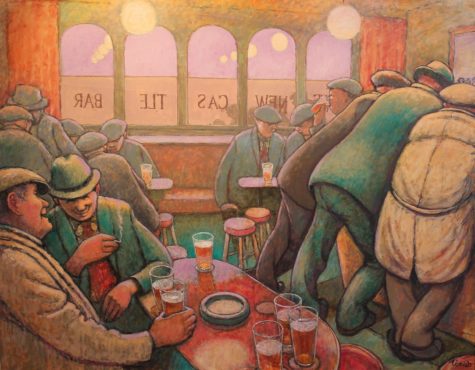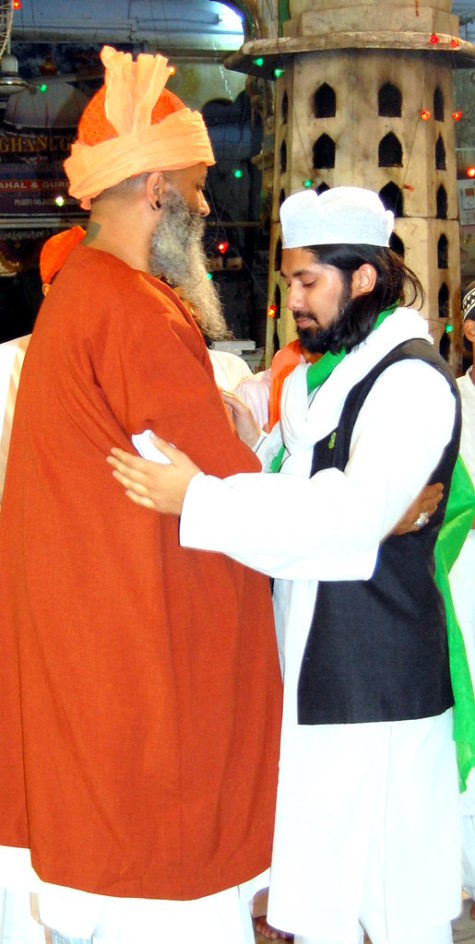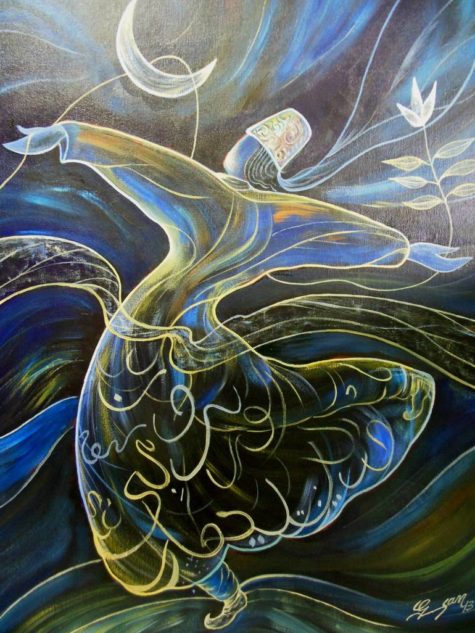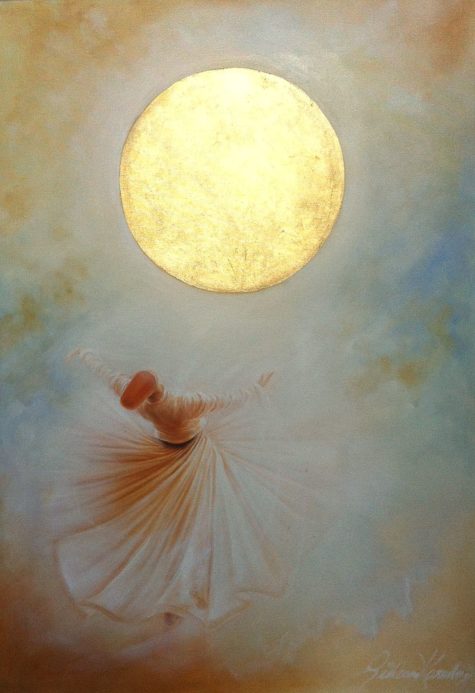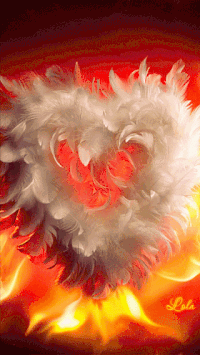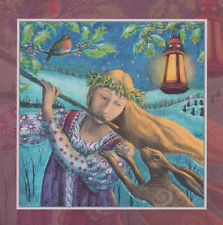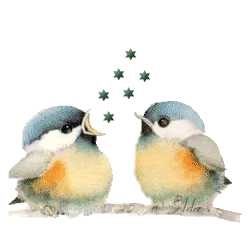Explanations
Notes On The Tavern
Coleman Barks talks about the Sufi symbolism and imagery of wine, drinking, and the tavern.
In the tavern are many wines – the wine of delight in color and form and taste, the wine of the intellect’s agility, the fine port of stories, and the Cabernet of soul singing. Being human means entering this place where entrancing varieties of desire are served. The grapeskin of ego breaks and a pouring begins.
Fermentation is one of the oldest symbols for human transformation. When grapes combine their juice and are closed up together for a time in a dark place, the results are spectacular. This is what lets two drunks meet so that they don’t know who is who. Pronouns no longer apply in the tavern’s mud-world of excited confusion and half-articulated wantings.
But after some time in the tavern, a point comes, a memory of elsewhere, a longing for the source, and the drunks must set off from the tavern and begin the return. The Qur’an says, “We are all returning.” The tavern is a kind of glorious hell that human beings enjoy and suffer and then push off from in their search for truth.
The tavern is a dangerous region where sometimes disguises are necessary, but never hide your heart, Rumi urges. Keep open there. A breaking apart, a crying out into the street, begins in the tavern, and the human soul turns to find its way home.
~The Essential Rumi
The Sufi Greeting
The ancient Sufi’s believed that the only way to really know someone is to connect at the soul level. This greeting was their way of doing that.
Done in Silence with complete focus on each other.
- Approach each other, looking into the eyes, with open hands – Nothing to hide.
- Touch palms together, still looking directly into the eyes.
- Think: “I greet you with perfect love and trust.”
- Holding arms 90° from body, palms touching (eyes locked)
- Think: “I crucify the ego.”
- Make a triangle with thumbs and forefingers, and “look in the eyes of God.”
- The right hand grasps the left hand of your partner, and presses it into the heart.
- Think: “I cherish you and connect with you in my heart.”
- Big inhale and raise/stretch arms above the head, sending energy to the universe and rejoicing with the love.
- Embrace, heart to heart, with right arm passing over left shoulder of partner, left arm around the back.
- Be grateful feel the joy of the true communion of human/divine spirit.
~Roving Reiki Master as taught by Mari Hall, RM
Osho Talks About Sufism
Excerpted from Osho’s series, Sufis: The People of the Path
Once a learned Mohammedan came to me and asked, “You are not a Mohammedan, then why do you speak on Sufism?’ I told him, ‘I am not a Mohammedan, obviously, but I am a Sufi all the same.’
A Sufi need not be a Mohammedan. A Sufi can exist anywhere, in any form—because Sufism is the essential core of all religions. It has nothing to do with Islam in particular. Sufism can exist without Islam; Islam cannot exist without Sufism. Without Sufism, Islam is a corpse. Only with Sufism does it become alive.
Whenever a religion is alive it is because of Sufism. Sufism simply means a love affair with God, with the ultimate, a love affair with the whole. It means that one is ready to dissolve into the whole, that one is ready to invite the whole to come into one’s heart. It knows no formality. It is not confined by any dogma, doctrine, creed or church. Christ is a Sufi, so is Mohammed. Krishna is a Sufi, so is Buddha. This is the first thing I would like you to remember: that Sufism is the innermost core—as Zen is, as Hassidism is. These are only different names of the same ultimate relationship with God.
The relationship is dangerous. It is dangerous because the closer you come to God, the more and more you evaporate. And when you have come really close you are no more. It is dangerous because it is suicidal…but the suicide is beautiful. To die in God is the only way to live really. Until you die, until you die voluntarily into love, you live an existence which is simply mediocre; you vegetate, you don’t have any meaning. No poetry arises in your heart, no dance, no celebration; you simply grope in the darkness. You live at the minimum, you don’t overflow with ecstasy.
That overflow happens only when you are not. You are the hindrance. Sufism is the art of removing the hindrance between you and you, between the self and the self, between the part and the whole.
A few things about this word ‘Sufi’. An ancient Persian dictionary has this for the entry ‘Sufi’…the definition given goes in rhyme: Sufi chist—Sufi, Sufist. Who is a Sufi? A Sufi is a Sufi. This is a beautiful definition. The phenomenon is indefinable. ‘A Sufi is a Sufi.’ It says nothing and yet it says well. It says that the Sufi cannot be defined; there is no other word to define it, there is no other synonym, there is no possibility of defining it linguistically, there is no other indefinable phenomenon. You can live it and you can know it, but through the mind, through the intellect, it is not possible. You can become a Sufi—that is the only way to know what it is. You can taste the reality yourself, it is available. You need not go into a dictionary, you can go into existence.
If you are not ready to have a bite of Sufism you can at least taste it.
And that’s what I am going to make available to you—a little taste. And once you have tasted even a drop of the nectar called Sufism you will become more thirsty for more. For the first time you will start feeling a great appetite for God.
These talks cannot explain to you what Sufism is—because I am not a philosopher. I am not a theologian either. And I am not really talking on Sufism, I will be talking Sufism. If you are ready, if you are ready to go into this adventure, then you will attain to a taste of it. It is something that will start happening in your heart. It is something like a bud opening. You will start feeling a certain sensation in the heart—as if something is becoming alert, awake there; as if the heart has been asleep for long and now it is the first glimmer of the morning—and there you will have the taste.
Sufism is a special kind of magic, a rare kind of magic. It can be transferred only from person to person, not from a book. It cannot be transferred by scriptures. It is also just like Zen—a transmission beyond words. The Sufis have a special word for it—they call it silsila. What Hindus call parampara they call silsila. Silsila means a transfer from one heart to another heart, from one person to another person It is a very, very personal religion.
You cannot have it without being related to an enlightened Master—there is no other way. You can read all the literature that exists on Sufism and you will be lost in a jungle of words. Unless you find a guide, unless you fall in love with a guide, you will not have the taste.
On Gambling
Coleman Barks talks about Rumi’s poems that describe gambling everything for love:
To a frog that’s never left his pond the ocean seems like a gamble. Look what he’s giving up: security, mastery of his world, recognition! The ocean frog just shakes his head. “I can’t really explain what it’s like where I live, but someday I’ll take you there.”
~The Essential Rumi
On Union
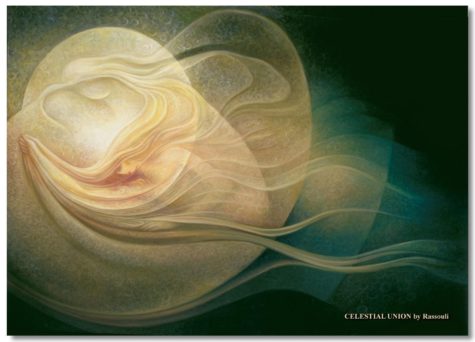
Coleman Barks talks about Rumi’s poetry, in particular, the ones which highlight the theme of “Union.”:
“There is a great feminine wisdom in these poems, a jemal quality as opposed to jelal. Many of the images of what it’s like to be in union have this tone to them. A baby at the mother’s breast. A river moving inside the personal fish, taking it to the ocean. Gnats lost in the wind. A dead donkey that has completely melded with a salt flat. The archery companion who lets the arrow fall where he stands. These are not heroic questing images.”
"What is it to praise?
Be particles."
“During a night of tornadic wind and lightning-everywhere weather in north Georgia, a friend murmured, “Where do hummingbirds go in this?” The next morning the humming birds, the same ones, were back fussing at the feeder. They know a hiding trick the gnats don’t. I think sometimes that poems can be places to hide, opisthodamal robe closets simulating the experiences they celebrate.”
"What is the soul?
Consciousness."
~ The Essential Rumi
The Symbols of Rumi
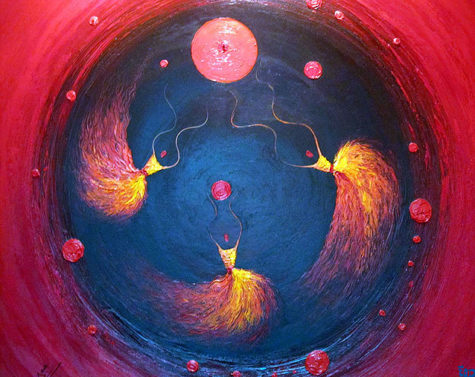
German philosopher and theologist, Rudolph Otto draws an allusion between God and a mighty mountain, the summit of which is invisible in eternal darkness. According to him, a very small part of this mountain is visible, and this appears as a promontory of good hope. We see this minute promontory, through the haze and the smoke of this world and consider it as the final.
Whenever we observe a Providential manifestation, we endeavour to commit it to memory by words or allegories. However, every word we find or every symbol we use to commit the manifestation is in one sense untrue. Therefore, and in accordance with all religions, the proper description of the Divine Secret is silence.
It is not possible to describe the secret of the Divine Being which is entirely different from all creation. The human being who discovers this secret and the final truth must not reveal it.
As Jalaluddin Rumi asserted and reasserted, it is impossible to get near the sun. The light and fire of the sun will destroy instantly anyone who attempts to observe it without the veil.
For these two reasons, the mystics who experience this observation in ecstasy use symbols for its description. They do this either to show an image of the final truth or to veil the merciless fire of this truth with a colored curtain.
The works of Jalaluddin Rumi are, therefore, saturated with such symbols. There is no other mystic poet either in the East or in the West to equal Rumi in the usage of such rich and resplendent symbols.
The most important symbol Rumi used was the sun. This is not extraordinary because his first and original beloved teacher was Shams al-Din. He saw the reflections and the rays of the Eternal Sun, the face of the Beloved, everywhere. In the absence of this sun, no roses will grow and no fruits ripen. The sun crowns the thorns of the bush with roses and turns the rough stones into red ruby through a process which lasts centuries. In similar manner, the Divine Beloved gives new life and eternal beauty to all lovers who love, suffer and wait longingly. But no one can enter this sun because His glorious magnificence burns all. The sun is an appropriate symbol to allude to the beauty and the majesty of God.
However, one single symbol, no matter how deep and meaningful it may be, cannot be sufficient for the comprehension of the diverse aspects of the Divine Reality. Rumi always searched for and found his symbols in nature. Orchards and gardens, birds and flowers, told the story of the lover and the beloved. The spirit was symbolised by a bird, which symbol was used from the time of the ancient Egyptians to the present day. The allegory of the rose and the nightingale, the duck which escapes into the sea, all allude to the central fact that the spirit desires to return to its original domain.
The smallest thing, whether it be a butterfly or a drop of water, in the hands of Rumi gains transparency and reveals the light of the Divine Secret. Man must become lost within the immense ocean of God like a drop of water, because man is like a small wave or fleck of foam created on that ocean. The fortunes afforded by God ebb and flow on that ocean and meet the shores of human life. But according to the wise, the occurrences which take place in our time and space are nothing but the reflections of the tides of fortune and misfortune which occur on that ocean which exists outside the realms of time and space. Whoever meets dissolution on that ocean immediately turns into the mother-of-pearl creating ocean. An absolute abandonment must create an absolute gain.
One of the characteristics of Rumi is that the symbols he used had not only one meaning, but were full of different meanings. These symbols can be taken as having a positive or a negative meaning. The fire, for instance, could be taken to mean the fire of hell, which can be extinguished either by the water of mercy or by the light of magnanimity; or it could also be taken to mean the fire of misfortunes which are made to purify the hearts. Where misfortune is used as a symbol of Divine love, it must mean the Fire of Love.
In all religions, there are certain symbols to allude to the religious truths and to the relationship of God and His creatures. Most of these symbols allude to the ancient rites and primitive customs. One of the most celebrated examples of these symbols is wine. Rumi draws a comparison between the indescribable intoxication caused by ecstasy and the intoxication caused by wine.
In eternity, in (Ruzi-i alast) God, in the shape of a cup-bearer, will hand the wine of love to the crying man away from home, longing for the scent of this cup, thereby indicating to His creatures his original domain or the way to his Beloved. This world is like an empty cup; when the lover sees the cup he becomes intoxicated. Because if the beauty of the cup-bearer becomes manifest and if there is a chance for the lover to drink the love from the lips of the beloved, the lover will perish by the majesty of the beloved. The cup-bearer is also a music-maker. He plays the flute, the lute and the lyre. The melodies produced on these instruments are always nostalgic. Man is like a lyre in the hands of his beloved, playing the tunes of torment; or man is like a lute in the lips of his beloved, inquiring the everlasting longing.
The flute, used as a symbol in many religions since ancient Babylonia, was a most favourite symbol with Rumi. According to him the roof and the doors of the house of love were made entirely of songs and poetry. The lover who can understand the voice of the flute responds to its tune and joins in the Sama and flies resplendent around the perpetual light of the Divine Beloved, like a planet or a star around the sun. In the Sama of Rumi and in all symbols relating to the Sama there is the deepest meaning.
Because the mystic lover eternally flies resplendent around one centre only; he wants to get near to one goal only and attempts to introduce his secret by using new symbols. The mystic lover finally understands the futility of his poetic endeavours and resumes silence and in silent gratitude flies resplendent around the beauty and majesty of God like an atom around the sun. He listens to His communication, and he gets completely dissolved into a state where there is no dhikr, no speaker and hearer. And the mystic lover flows into dissolution in the midst of all the symbols of different shades and colours and in the darkness of light.
Found at: The Institute of Ismaili Studies
Marge and Tom Sexton: You Can’t Be Alive
JC: Joel Goldsmith On The Soul
Mayanna Anderson: The Sufi Greeting
Ena da Silva: The Sufi Greeting
Ena da Silva: The Sufi Greeting
